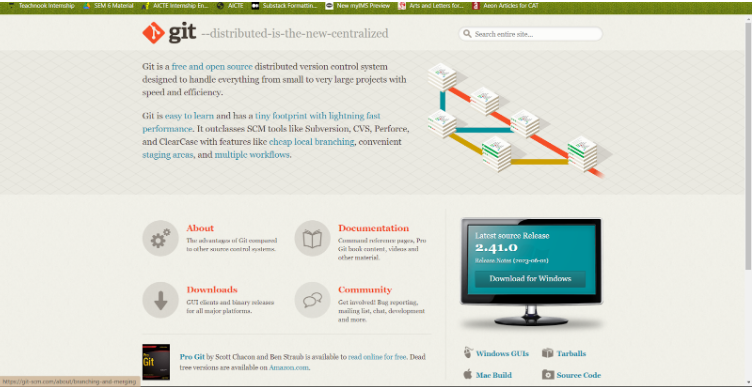Understanding Git
What is Git?
Git, an extensively employed distributed version control system (VCS) in software development, was developed in 2005 by Linus Torvalds, the creator of the Linux operating system. By enabling the tracking of file modifications over time, Git facilitates collaborative work among numerous developers on a project.

Who uses Git ?
- Individual Developers: Many developers rely on Git to manage their personal projects and keep track of code modifications in their own codebase.
- Software Development Teams: Git is extensively used by teams of developers engaged in software projects, spanning from small startups to large enterprises. It enables seamless collaboration, efficient version control, and streamlined code management.
- Open-Source Projects: Git is the preferred choice for managing open-source projects. It allows multiple contributors to work on the same codebase, submit their changes as patches, and merge them into the main project.
- Companies and Organizations: Git has gained widespread adoption among companies and organizations of all sizes. It facilitates team collaboration, ensures code integrity, and enables efficient management of software projects.
Features of Git:
- Distributed Architecture: Git's decentralized nature empowers each developer to possess a complete replica of the project, guaranteeing independence, the ability to work offline, and effortless synchronization of changes.
- Efficiency and Swiftness: Git is engineered to be agile and lightweight, delivering outstanding performance even when dealing with sizable codebases.
- Branching and Merging: Git offers advanced functionalities for branching and merging, enabling adaptable development workflows, effortless creation of feature branches, and seamless integration of modifications.
- Security and Integrity: Git employs cryptographic hashing to safeguard the integrity and authenticity of code alterations, rendering it highly resilient against tampering.
- Extensibility: Git provides a broad range of extensions, plugins, and integrations with diverse tools and services, granting developers the ability to tailor and enhance their workflow as desired.
Applications of Git:
- Version Control: Git's primary purpose is to enable effective version control, empowering developers to track changes, revert to previous versions, and seamlessly collaborate on codebases.
- Branching and Merging: Git's advanced branching and merging capabilities play a critical role in managing different lines of development. It allows developers to create branches to work on new features or bug fixes independently, which can later be merged back into the main codebase.
- Collaboration and Code Review: Git streamlines collaboration among developers by facilitating concurrent work, conflict resolution, and effective review and discussion of code changes.
- Code Backup and Recovery: Due to Git's distributed nature, each developer possesses a complete copy of the project's history. This provides a reliable backup and simplifies code recovery in the event of accidents or data loss.
- Continuous Integration and Deployment (CI/CD): Git seamlessly integrates with CI/CD pipelines, enabling automated testing, building, and deployment processes. Developers can trigger these actions based on Git events, ensuring smooth integration and delivery of code changes.
- Experimentation and Feature Development: Git branching and tagging features empower developers to experiment with new ideas and implement new features without disrupting the main codebase. This facilitates iterative development and supports the maintenance of a stable production environment.
Conclusion:
Git has been widely used with all the applications, and features it provides it enables its users to have proper control over the project and it gives them the liberty of mending with different versions in various ways to get the best of the features to their project.
The seamless integration and usage of git attracts more companies and developers to use it and it is a very necessary skill a developer needs to possess in this modern era.
References:
- https://www.atlassian.com/git/tutorials/what-is-git
- https://www.simplilearn.com/tutorials/git-tutorial/git-vs-github#:~:text=While%20Git%20is%20a%20tool,as%20far%20as%20their%20function.
- https://git-scm.com/
- https://chat.openai.com/
Do Checkout :
To know more about such interesting topics, visit this link.
Do visit our website to know more about our product.
Article By, Dinesh Sai Kumar Pilla
Reviewed By, Meghana Prabhandham